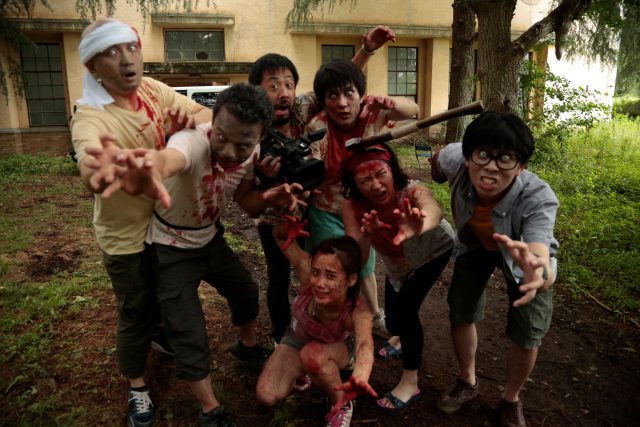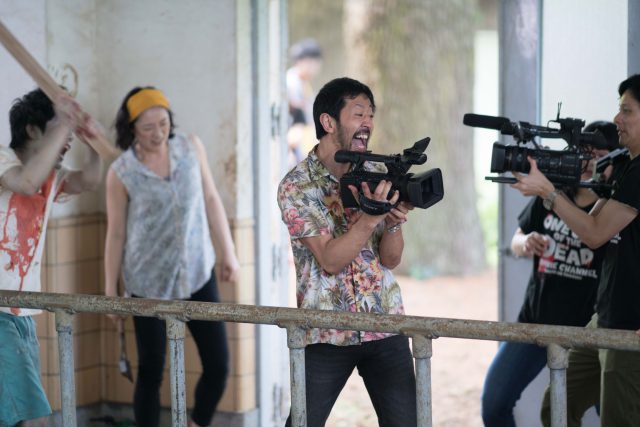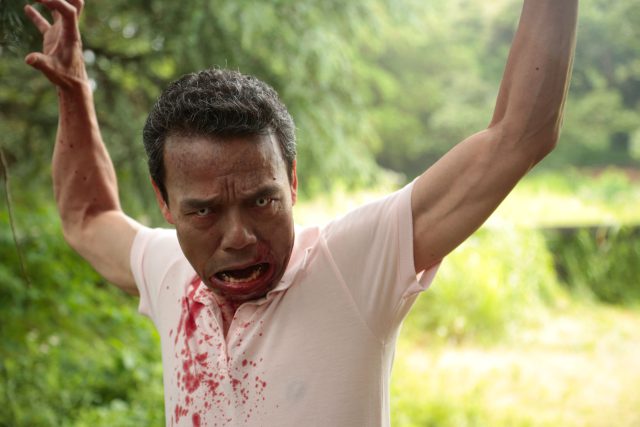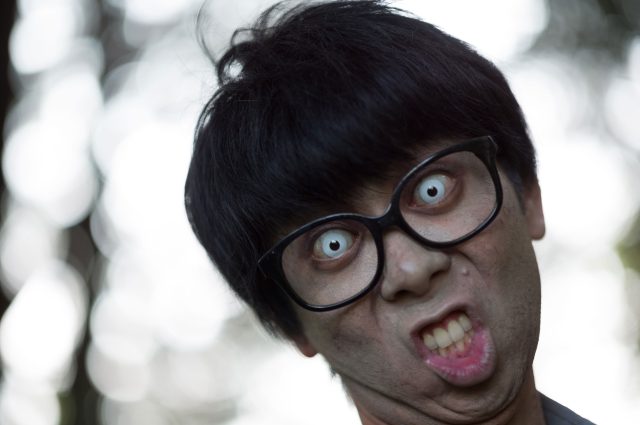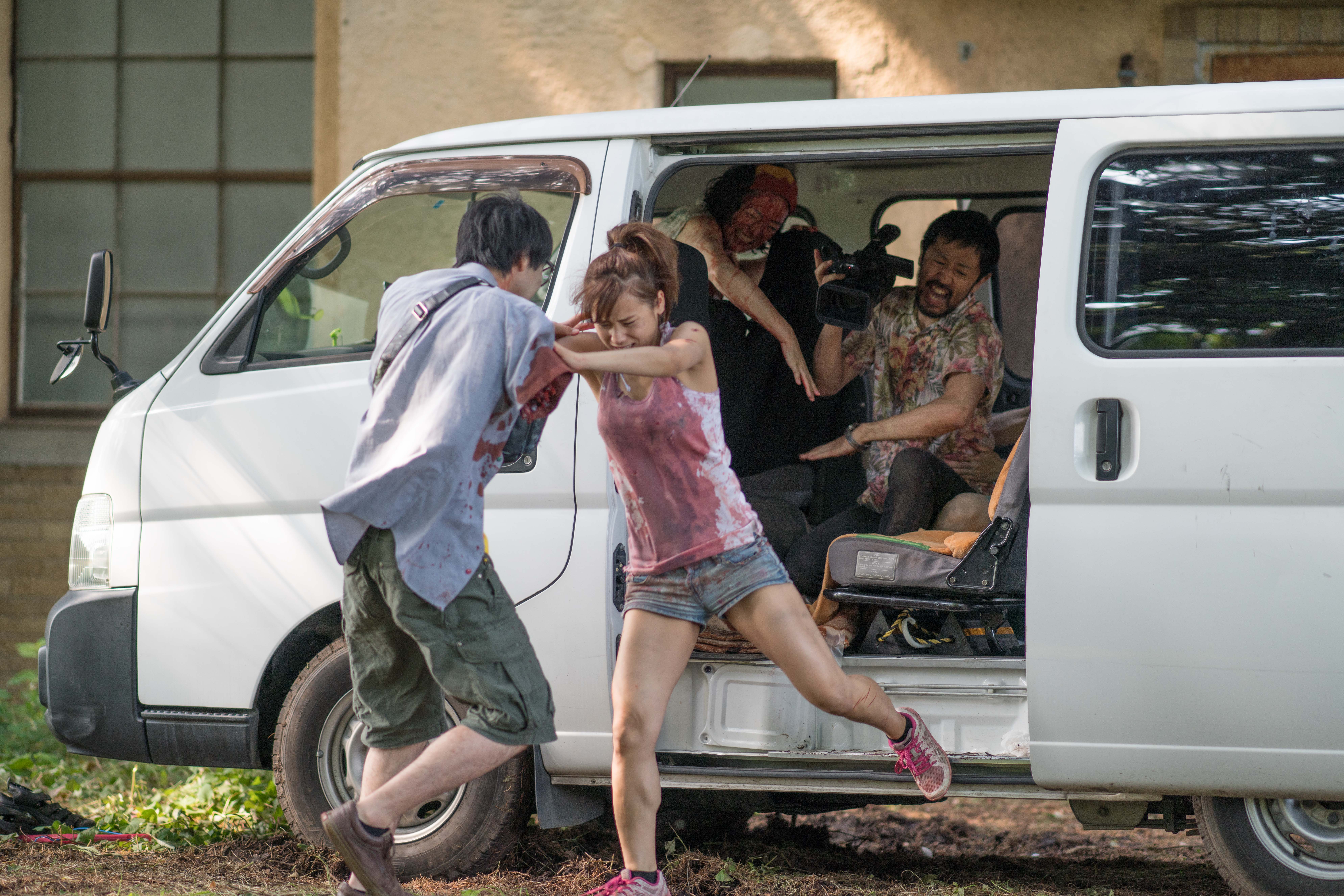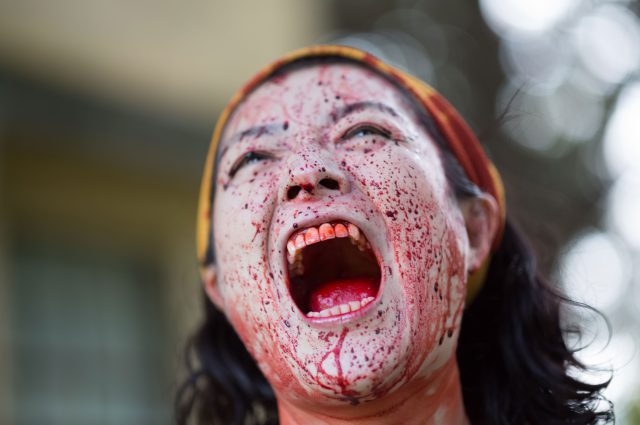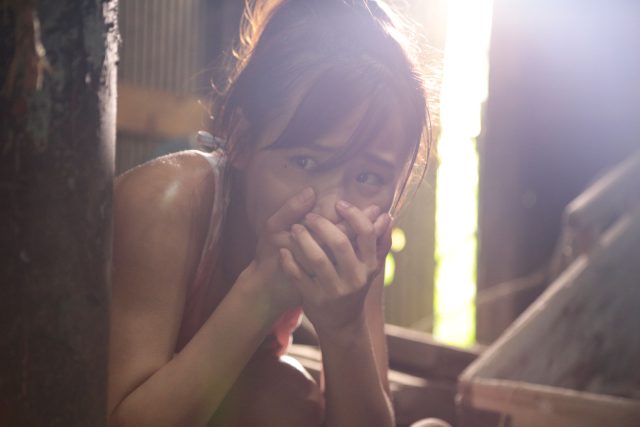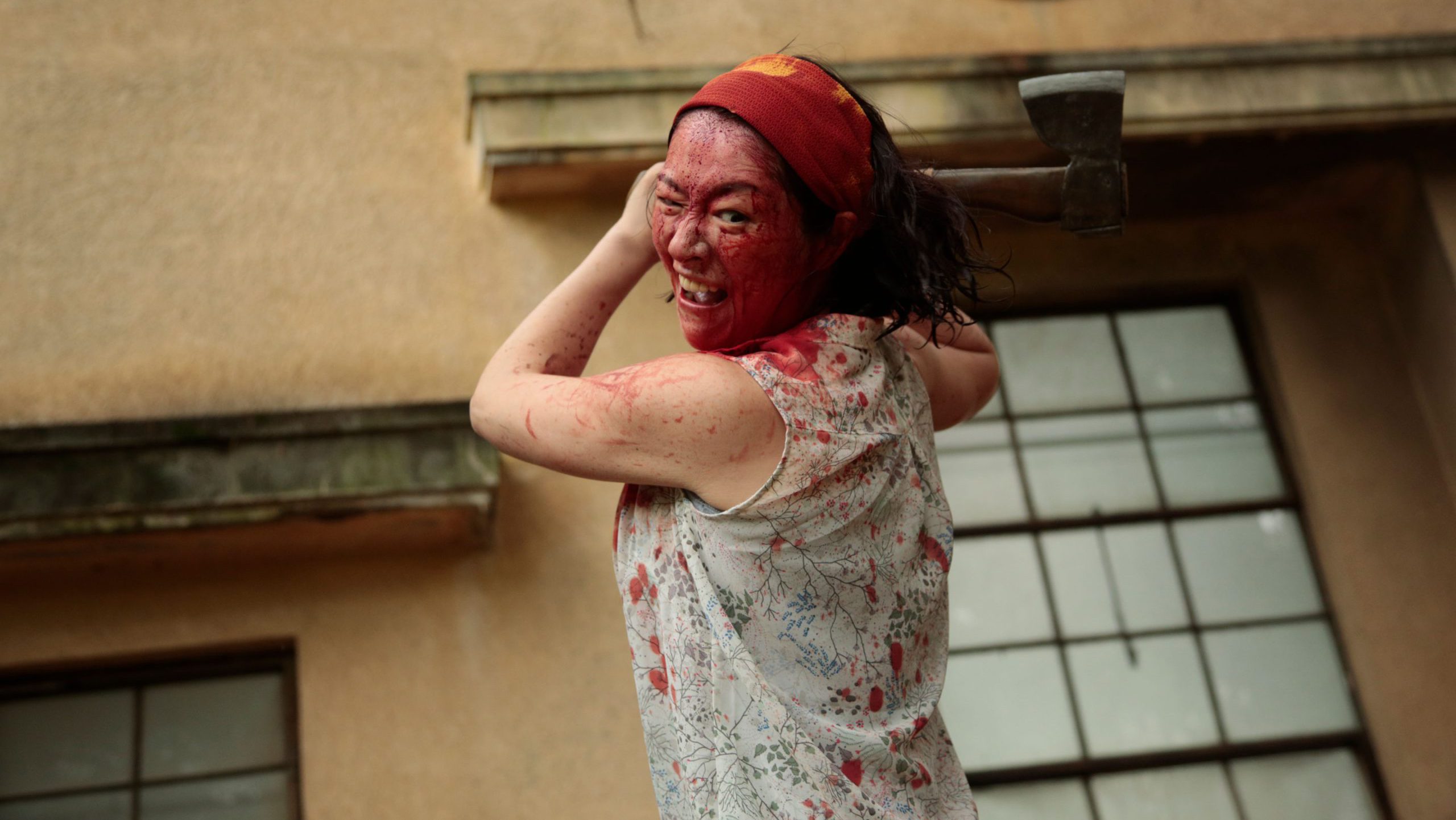
In the dim, echoing halls of an abandoned water purification plant—once a clandestine site for shadowy military experiments—a frantic low-budget zombie movie production hurtles toward catastrophe, captured in one unbroken, breathless 37-minute take that forms the electrifying opener of Shinichiro Ueda’s One Cut of the Dead. This Japanese horror-comedy, clocking in at a taut 96 minutes, masquerades as a shambling genre exercise before peeling back its layers like a gleeful matryoshka doll, transforming clichés into a triumphant meta-farce on the alchemy of filmmaking. Ueda, who penned, directed, edited, and stars in this guerrilla masterpiece made for a mere $25,000 and shot with non-actors from his theatre troupe, delivers a film that devours zombie tropes only to regurgitate them as sparkling satire, proving that necessity is the mother of reinvention.
The action ignites with director Higurashi (Takayuki Hamatsu), a disheveled auteur in a garish floral shirt, barking orders like a deranged ringmaster as his skeletal crew scrambles to capture a live, one-take broadcast for a fledgling zombie TV channel. His mantra? “Fast, cheap, but average”—a philosophy that underscores every improvised squib, wobbly dolly shot, and half-hearted snarl. At the heart of the undead frenzy is Nao (Yuzuki Akiyama), the film’s aspiring scream queen and “final girl,” whose piercing, comically unmodulated wails pierce the air as she fends off the horde with makeshift ferocity. Flanking her is Koji (Kazuaki Nagaya), the reluctant male lead and method actor extraordinaire, who freezes mid-bite during a zombie attack, his earnest pauses injecting absurd pathos into the pandemonium. Tough-as-nails makeup artist Chinatsu (Mio Kudo) stitches gashes with gaffer tape and grit, her quiet competence a beacon amid the blood-soaked bedlam, while sound engineer Hosoda (Shinichiro Ueda himself) dodges the fray with a boom mic like a lifeline.
As the “zombies”—a motley assortment of extras in tattered rags and graying prosthetics—breach the barricades, the line between scripted slaughter and visceral survival blurs in a whirlwind of flailing limbs, exploding entrails (courtesy of unreliable squibs), and Higurashi’s unhinged rants about “true filmmaking.” He prowls the set like a possessed shaman, yelling “Action!” over guttural moans and clattering props, his eyes wild with the delusion that “there is no fiction, no lies—this is reality!” The plant’s cavernous corridors, lit by harsh fluorescents and flickering strobes, amplify the claustrophobic chaos: overturned tables become barricades, flickering monitors capture the carnage in grainy feeds, and the air hums with the wet smack of fake gore turning suspiciously sticky. It’s a symphony of mishaps—actors corpsing mid-scene, cables snagging heels, and a persistent undercurrent of explosive diarrhoea gags that weaponise bodily humour against horror’s pomposity.
Yet just as the credits tease a conventional fade-out, Ueda yanks the reel backward, rewinding to one month prior and unveiling the true heart of this nesting narrative: a scrappy origin story of desperation and ingenuity. We meet Higurashi not as the tyrannical visionary but as a mild-mannered karaoke video hack, drowning in debt and dodging yakuza collectors, when he’s roped into helming this make-or-break TV special. His estranged daughter Mao (a sharp-tongued Harumi Shuhama), a film school prodigy moonlighting as assistant director, navigates the minefield of her father’s mediocrity, their fractured bond a tender thread amid the farce. Budget overruns loom like the undead: a lead actor flakes for a soap opera gig, props are pilfered from junkyards, and rehearsals devolve into shouting matches over blocking and bite marks. Nao, revealed as a novice actress haunted by her idol mother’s legacy, channels raw nerves into her role; Koji, the brooding stand-in, grapples with his own artistic pretensions; and Chinatsu emerges as the unsung hero, her steady hands mending more than makeup.
What follows is a joyous dissection of the filmmaking sausage-making: audition tapes gone awry, frantic script rewrites scrawled on napkins, and all-nighters fuelled by instant ramen and caffeine. Ueda’s camera, wielded by cinematographer Takeshi Sone with balletic precision, choreographs this backstage ballet—long, unbroken tracking shots mirroring the opener’s gimmick but infused with wry intimacy. Handheld frenzy gives way to static sitcom framing, underscoring the film’s tonal whiplash from visceral horror to cozy ensemble comedy, all while lampooning the genre’s sacred cows: the shambling horde as underpaid extras, the final girl’s shriek as vocal warm-up, the director’s meltdown as creative catharsis.
At its core, One Cut of the Dead pulses with themes of communal resurrection, where budgetary binds birth boundless invention and personal rifts heal through shared absurdity. It’s less a zombie flick than an ode to the B-movie underdogs—the make-do mavericks who keep genres alive against the tides of taste—eschewing cynical irony for wholesome sincerity. Higurashi’s arc from apathetic everyman to fervent artist mirrors the troupe’s collective epiphany: cinema thrives not in polish but in the messy, collaborative spark of “now or never.” Echoes of François Truffaut’s Day for Night mingle with Ed Wood’s earnest ineptitude, but Ueda infuses it with J-horror flair—subtle uncanny valleys in the zombies’ vacant stares, a humming ambient dread that flips to farce.
The film’s final act circles back, refracting the opener through this newfound lens, inviting rewatches where “flaws” bloom into deliberate delights: a lingering glance here, a muffled ad-lib there. In a world of slick blockbusters, One Cut of the Dead stands as a scrappy revelation—the funniest horror-comedy in years, a zombie romp that bites deep into the soul of storytelling, reminding us that the greatest undead are the ideas we refuse to bury.

